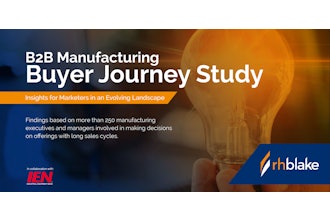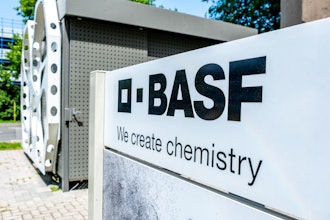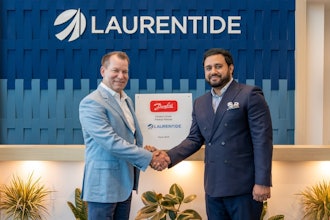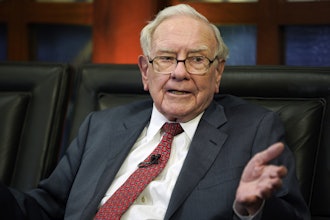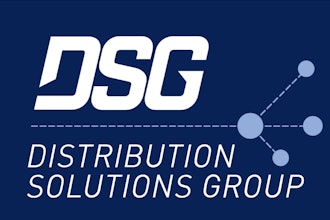
While seeking to advance the retirement readiness of its employees, the Milwaukee-based manufacturer achieves remarkable 401(k) participation, contribution rates & participant asset allocation
When David Westgate, CEO of Milwaukee-based manufacturer Jason, Inc. reviewed the retirement statistics of his workforce in 2011, he became concerned with what he saw. Less than 70% of employees were enrolled in the company’s retirement plan and the portion of participants utilizing an age-appropriate asset allocation strategy was only 45%. Westgate knew these statistics meant that many of his employees would not be financially prepared to retire. Something different and profound needed to occur with Jason’s retirement plan to correct the problem.
Jason is a global manufacturing company with over 4,000 employees in the U.S. and 15 foreign countries. Jason’s business model is centered on leveraging their collective expertise, with managers sharing best practices across companies and product lines to manufacture best-in-class products that focus on advancing their clients’ businesses.
The low levels of enrollment, deferral percentage and participation in an age-appropriate asset allocation investment strategy support what many studies have shown - a lack of understanding leads to procrastination, missing enrollment deadlines, and not taking the time to review investments to design an appropriate long-term investment strategy.
A recent survey conducted by Harris Interactive on behalf of Colonial Life & Accident Insurance Company found that 98% of the employees in the survey believe that it is at least somewhat important for them to understand the retirement benefits provided to them by their employer, while 73% feel such knowledge is very important. However, many find the information that is provided too complicated and confusing.
The same survey also found that the employees placed importance on having choices to customize their benefits package, in-person access to a benefits expert, regular updates about the benefits program, and benefits information that is easy-to-understand.
Nonetheless, employees are looking for help in making retirement benefit decisions more than ever before. Vanguard found that 36% of participants in their 401(k) plans relied on professional portfolio construction in 2012, more than double the amount of just five years ago.
Therefore, Westgate realized that taking the lead and helping employees financially prepare for retirement would be necessary. Over the past year, Jason has implemented a number of new provisions to achieve these objectives.
The first step for the company was to strengthen their relationship with long-term investment advisor, Alliance Benefit Group (ABG). ABG was named a 3(38) fiduciary with discretionary control over Jason’s investment menu. With this new arrangement, Jason felt comfortable in rolling out aggressive changes to the Jason Employee Savings & Profit Sharing Plan (the Plan).
Considering the troubling retirement statistics for Jason’s workforce, the Plan set the goals of increasing the employee participation and deferral rates and improving the savings outcome by encouraging participants to enroll in a model portfolio designed to provide an optimal investment asset allocation strategy. With the best interests of their employees at heart, Jason decided to undertake ambitious measures.
A popular strategy to ensure participation in a retirement plan is to implement an auto-enrollment feature – and nearly half of all plans in the U.S. currently do this. However, a large portion – about two-thirds – of the plans that utilize the auto-enrollment feature only apply it to new hires and the average deferral rate is only 3%. Most retirement plan experts believe that this rate is far too low, but companies worry that they will appear autocratic or anger their employees if they implement deferral rates that are too aggressive.
Jason knew they needed to do more than the average company in order to make a difference in the retirement outcomes of their workforce. ABG suggested a target of 90/10/90, which is a plan participation rate of 90%; a goal over time of an average deferral rate of 10%; and 90% of participants enrolled in the asset allocation strategy that was most appropriate for them based on age.
Given that education and communication are critical inputs to plan participation, a robust communications and education campaign was launched prior to implementing any of the plan modifications. This involved both onsite education meetings with benefits experts at each of Jason’s company locations and the creation and distribution of user-friendly written materials about the benefits program.
Following the initial education phase, Jason’s next step was to expand the Plan menu to increase participant options for diversification. Alternative asset classes were added to the Plan in October 2012, as well as a fifth risk-based model portfolio.
The next step was to implement an aggressive automatic enrollment plan at the beginning of 2013 in order to drive a higher participation and savings rate and allow participants to take advantage of Jason’s generous matching contribution.
Unlike the typical employer, Jason re-enrolled every employee into an age-appropriate model portfolio - regardless of previous participation or nonparticipation and regardless of wage or tenure. The Plan also auto-enrolled nonparticipating employees at a 6% deferral rate and increased the deferral rate to that level for current participants with a rate below 6%. Jason currently provides a matching contribution of up to 75% on the first 6% of deferred income.
These adjustments were clearly communicated before they went into effect and participants were given the opportunity to opt out. This re-enrollment into a model portfolio will automatically continue on an annual basis as participants cross the age brackets.
Lastly, the Plan will introduce an automatic escalation provision effective January 1, 2014, to further augment the deferral rate. Each year participants deferring less than 10% will have their deferral rates raised by an incremental 1%. Only about 30% of retirement plans include an auto-escalation feature and, again, employees will have the opportunity to opt out.
While the final step of the new Plan provisions isn’t slated until next year, the results are already impressive. Since the initial implementation in January 2012, the enrollment rate has increased from less than 69% to 91%, and the utilization rate of the model portfolios more than doubled from 45% to 93%.
Most importantly, even though Jason’s employees had the opportunity to opt out ahead of enrollment, almost all chose to participate at the recommended levels. Jason’s success with proactively encouraging retirement plan participation, increased deferral rates, and age appropriate asset allocation should alleviate the fears that many employers have that they will antagonize employees by introducing similar provisions.
“Our results demonstrate that the 90/10/90 methodology works, and is highly appreciated by our workforce,” says Westgate. “As an employer we know that these proactive measures increase the odds of our employees having a long-term, financially sustainable future at retirement.”
Grant S. Arends is President of Alliance Benefit Group of Kansas City, Inc. ABG is the 3(38) Discretionary Advisor for Jason.













